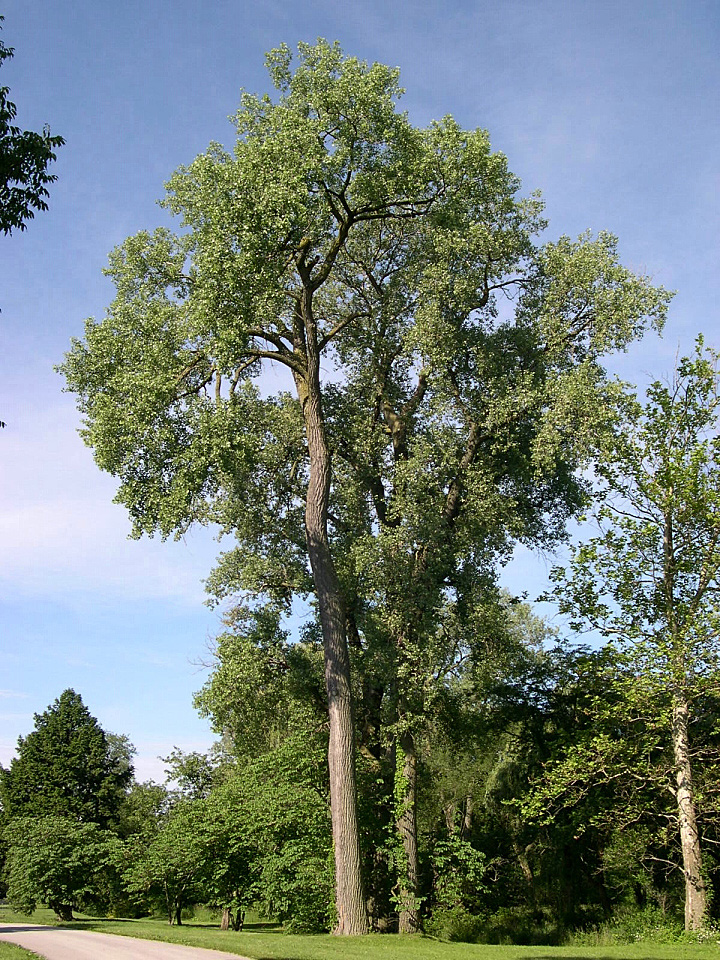eastern cottonwood tree facts
Eastern cottonwoods are dioecious meaning trees are either male or female. It grows best on moist well-drained.

Facts About Cottonwood Trees Gardenerdy
It also thrives in floodplains and dry riverbeds where infrequent rains transform dry land into waterways.

. 3 to 6 inches long. Upper sides of the leaves are a dark green and the undersides are pale. They are also usually found in a natural park setting.
The main benefit of this extremely fast-growing tree. A riparian zone tree the eastern cottonwood Populus deltoides is one of the largest North American hardwood. Cottonwood tree identification.
Eastern cottonwood is the state tree of Nebraska and can grow in great abundance along streams and rivers and other wet areas. The leaves of this species are an important food source for the larvae of many species of butterflies and moths. The thick bark of the eastern cottonwood protects the interior sensitive wood from injury.
Ironically the wood of the trees are soft. Both are long catkins. It is the fastest-growing native tree in Missouri reaching 50 feet in height and 8 inches in diameter in as little as 6 years under good conditions.
Cottonwood makes its best growth on moist well-drained fine sandy loams or silt loams. Eastern cottonwood Populus deltoides one of the largest eastern hardwoods is short-lived but the fastest-growing commercial forest species in North America. 75 to 100 ft Type.
Due to the soft texture of this tree the bark is usually used to make smoother materials such as plywood. Coarse sands and heavy clay soils are not satisfactory. 35 to 60 ft Common characteristics.
Its growth may exceed 10 feet in height its first year about 5 feet in height in each succeeding year and about 1 inch in diameter per year. A towering native a cottonwood tree soars and spreads growing more than 100 feet tall and almost as wide. Interesting Eastern cottonwood Facts.
Eastern North America Height. They are dark green above and a much paler green below. The trees can grow to well over 100 feet tall 30 m with eastern species sometimes reaching 190 feet 59 m.
Facts About Eastern Cottonwood Trees Cottonwoods are made up of three different tree species. Native to the southwestern United States and western Mexico the species has a subtle nuance compared to eastern cottonwood. The leaves turn yellow in fall.
Siouxland poplar a cotton-less cottonwood was introduced by South Dakota State University. Fun facts about your tree. It can reach more than 100 feet in height up to 190 feet and 6 feet in width trunk.
Eastern Cottonwood is a large fast growing species native to North America. The bark is smooth and silvery-white when young and becomes hard gray and deeply fissured as the tree matures. In the wild cottonwood grows along rivers ponds and other bodies of water.
The young tree has smooth yellow-green bark. The leaves of the eastern cottonwood are broad and slightly triangular. For example the northern Great Plains which hosts eastern cottonwood trees provides about 50 percent of deer habitats and 70 percent of the habitats for the sharp tailed grouse.
The eastern cottonwood is one of the fastest growing species native to North America averaging around 5 feet of height growth per year and growing as much as 13 feet in the first year. Flowers on the eastern cottonwood species are reddish on male trees and yellowish-green on female trees. Cottonwoods provide excellent shade in lakeside parks or marshy areas.
Its a cherished shade tree often planted in parks. The Eastern Cottonwood is both a fast growing and a short-lived tree. The tree can have a trunk diameter of 6 feet while the canopy can extend to more than 75 feet wide.
They are native to North America and they are known for their fast growth and silky white-haired seeds. Leaves are simple opposite large and oval almost heartshaped. The canopy of a mature tree spreads about 75 feet wide 23 m and the diameter of the trunk averages about 6 feet 2 m at maturity.
Eastern cottonwood is a large fast-growing tree found along streams rivers and lowland areas. The Eastern Cottonwood Populus deltoides is one of the largest North American hardwood trees although the wood is rather soft. Eastern cottonwood Populus deltoides Fremonts cottonwood.
Eastern cottonwoods can be identified by their blocky ashy-gray bark which has extremely thick flat-topped furrowed ridges on mature trees. Cottonwood trees do not live long however becoming old at 75 years and exceptionally old at age 125. Eastern cottonwood is a fast-growing tree it grows 6 feet per year.
Comments Eastern cottonwood Populus deltoides one of the largest eastern hardwoods is short-lived but the fastest-growing commercial forest species in North AmericaIt grows best on moist well-drained sands or silts near streams often. Crown is oblong-shaped and 75 feet wide Eastern cottonwood has thick bark which prevents damage of the inner delicate wood. 70 to 80 ft.
2 to 9 Height. Eastern poplars can grow up to. Some improved clones in some tree plantations have yielded trees that grew up to 10 feet per year.
The tree is short-lived very fast-growing and can take over an open area if left alone. Eastern cottonwood leaves are triangular deltoid with curved teeth along the edges. Though no longer in favor by most homeowners this tree is well-suited for acreages farms.
It shares common traits with eastern cottonwood but has slightly larger leaves. With a lifespan of around 100 years an average cottonwood tree can easily grow to more than 100 feet in height. Due to its large size weak wood and penetrating roots it is best used on large properties away from residential areas.
The eastern cottonwood can be seen throughout Minnesotas landscapes in the urban environment as well as natural areas. It is native to eastern North America through the Midwest and Chicago region. 80 to 100 ft Width.
The base of each leaf is coarsely toothed. This tree has the ability to sprout from woody stem cuttings and 3-foot sections can be. Eastern cottonwood trees are classified as having a fair value for most wildlife species including songbirds game birds and game mammals.

Cottonwood Trees Of Manitoba Inaturalist
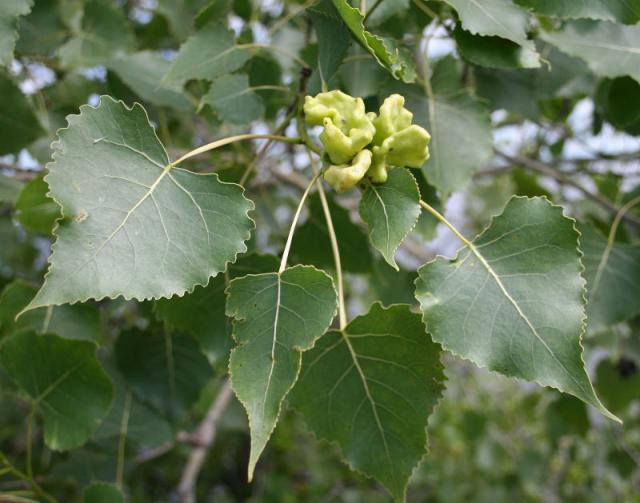
Populus Deltoides Eastern Cottonwood Salicaceae

Virginia Tech Dendrology Fact Sheet

24 Eastern Cottonwood Tree Facts You Have Not Read Before
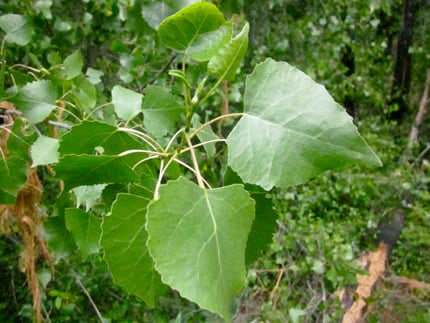
Fremont Cottonwood University Of Redlands

Eastern Cottonwood Tree Southern Native Trees

Eastern Cottonwood North Central Region Bottomland Hardwood Management Guide

Cottonwood Tree All You Need To Know About Environmental Earth

Cottonwood Eastern Cottonwood Poplar Eastern Cottonwood Southern Cottonwood Mdc Teacher Portal
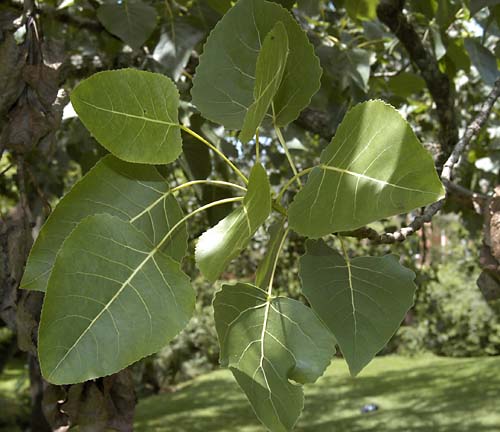
Populus Deltoides Eastern Cottonwood Salicaceae

Virginia Tech Dendrology Fact Sheet

Facts About Cottonwood Trees Gardenerdy

Facts About Cottonwood Trees Gardenerdy

3 Types Of Cottonwood Trees Home Stratosphere
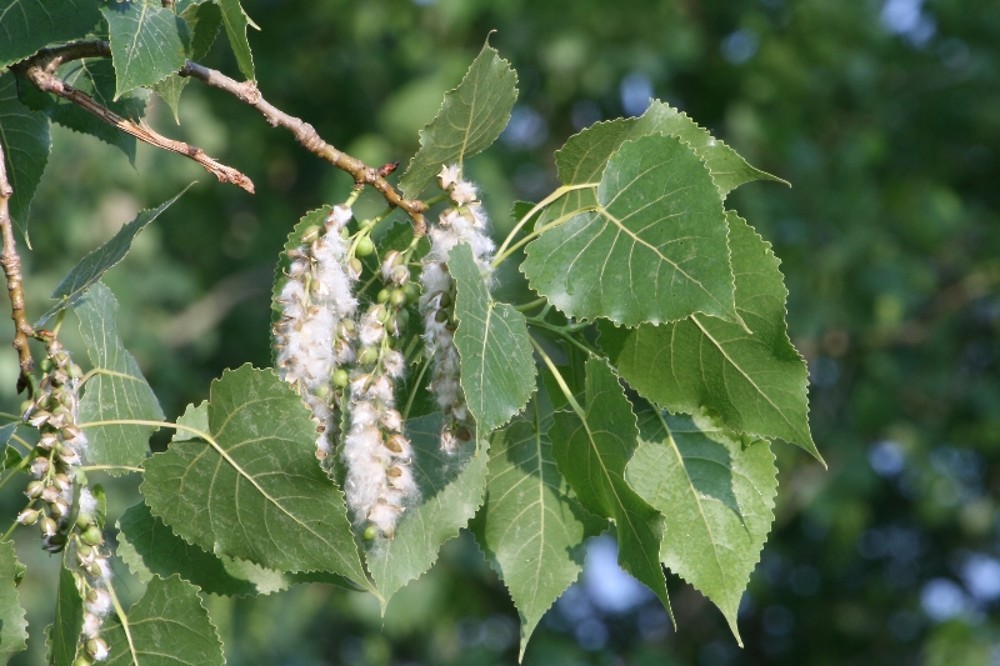
Populus Deltoides Eastern Cottonwood Necklace Poplar Go Botany
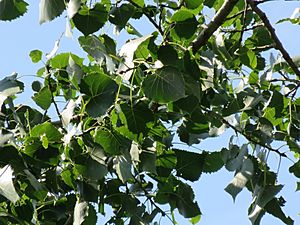
Eastern Cottonwood Facts For Kids
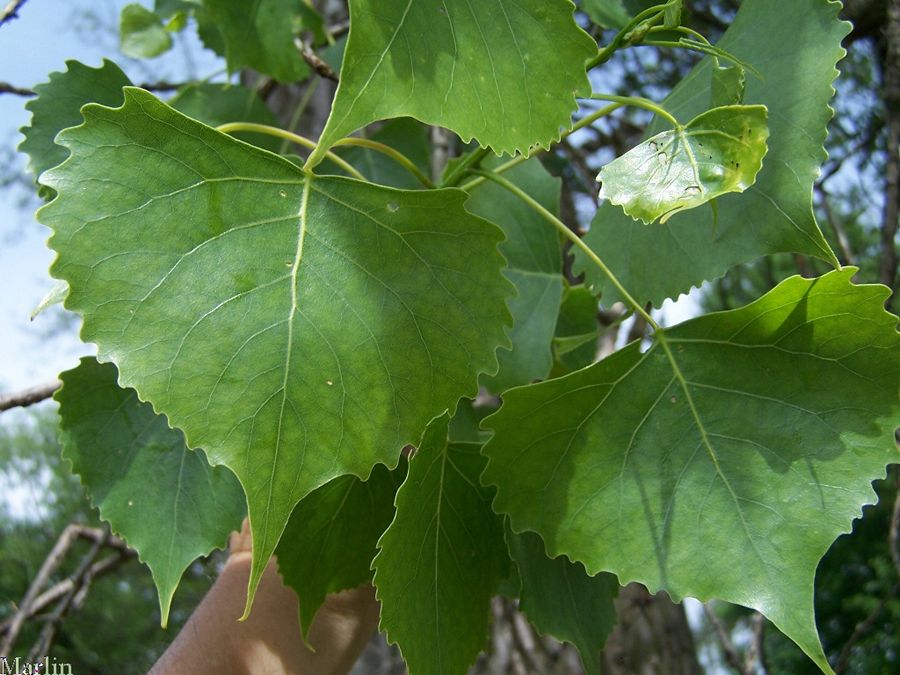
Eastern Cottonwood Populus Deltoides North American Insects Spiders
